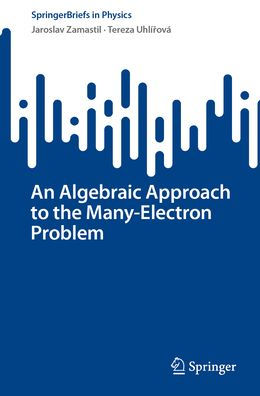An Algebraic Approach to the Many-Electron Problem
This book presents an algebraic approach to the coupled cluster method for many-electron systems, pioneered by Josef Paldus. Using field methods along with an algebraic, rather than diagrammatic, approach facilitates a way of deriving the coupled cluster method which is readily understandable at the graduate level. The book begins with the notion of the quantized electron field and shows how the N-electron Hamiltonian can be expressed in its language. This is followed by introduction of the Fermi vacuum and derivation of the Hartree-Fock equations along with conditions for stability of their solutions. Following this groundwork, the book discusses a method of configuration interaction to account for dynamical correlations between electrons, pointing out the size-extensivity problem, and showing how this problem is solved with the coupled cluster approach. This is followed by derivation of the coupled cluster equations in spin-orbital form. Finally, the book explores practical aspects, showing how one may take advantage of permutational and spin symmetries, and how to solve coupled-cluster equations, illustrated by the Hubbard model of benzene, the simplest quasi-realistic model of electron correlation.
1147047698
An Algebraic Approach to the Many-Electron Problem
This book presents an algebraic approach to the coupled cluster method for many-electron systems, pioneered by Josef Paldus. Using field methods along with an algebraic, rather than diagrammatic, approach facilitates a way of deriving the coupled cluster method which is readily understandable at the graduate level. The book begins with the notion of the quantized electron field and shows how the N-electron Hamiltonian can be expressed in its language. This is followed by introduction of the Fermi vacuum and derivation of the Hartree-Fock equations along with conditions for stability of their solutions. Following this groundwork, the book discusses a method of configuration interaction to account for dynamical correlations between electrons, pointing out the size-extensivity problem, and showing how this problem is solved with the coupled cluster approach. This is followed by derivation of the coupled cluster equations in spin-orbital form. Finally, the book explores practical aspects, showing how one may take advantage of permutational and spin symmetries, and how to solve coupled-cluster equations, illustrated by the Hubbard model of benzene, the simplest quasi-realistic model of electron correlation.
49.99
In Stock
5
1

An Algebraic Approach to the Many-Electron Problem
71
An Algebraic Approach to the Many-Electron Problem
71
49.99
In Stock

Product Details
| ISBN-13: | 9783031878275 |
|---|---|
| Publisher: | Springer Nature Switzerland |
| Publication date: | 05/08/2025 |
| Series: | SpringerBriefs in Physics |
| Pages: | 71 |
| Product dimensions: | 6.10(w) x 9.25(h) x (d) |
About the Author
From the B&N Reads Blog
